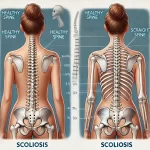
Bone marrow transplant (BMT) is a medical procedure that is used to treat various types of cancers and other diseases that affect the bone marrow. This procedure involves the replacement of a patient’s diseased or damaged bone marrow with healthy bone marrow stem cells. Although bone marrow transplant can be life-saving, it is not without its side effects. Coping with the physical side effects of bone marrow transplant can be challenging, but it is important to remember that these side effects are temporary and will eventually subside. In this article, we will discuss some ways to cope with the physical side effects of bone marrow transplant.
Coping with the physical side effects of bone marrow transplant can be challenging, and it is important to address the emotional side effects as well. It is normal to feel anxious, depressed, or overwhelmed during this time. Consider talking to a therapist or joining a support group to help you cope.
Indian Health Adviser (IHA) is a healthcare facilitator seeking to make health and wellness easier for people of international residents, their families, and their friends.
Designed by Acmeinfolabs